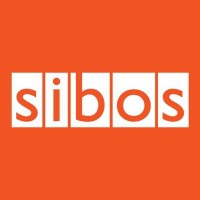The provider has just begun to test the combination of multiple A.I. technologies with its BRx data model.
 Broadridge Financial Services is exploring how artificial intelligence technologies combined with the provider’s logical data model BRx can be applied to capital markets, including front-to-back-office applications across asset classes.
Broadridge Financial Services is exploring how artificial intelligence technologies combined with the provider’s logical data model BRx can be applied to capital markets, including front-to-back-office applications across asset classes.
The proof-of-concept (POC) effort has only been underway for the past three weeks, says Hugh Daly, general manager, data and enterprise solutions, at Broadridge. Daly told FTF News about the POC while at SWIFT’s SIBOS conference and exhibition underway in Toronto where A.I.’s impact was a hot subject among financial services firms and providers.
“We had a major European bank involved in the proof of concept,” Daly says. “Our initial use cases have originated in capital markets, and this includes our front-to-back applications across asset classes.”
The A.I. technologies being tested via the POC are AWS Bedrock, LLaMa2, OpenAI GPT-4, OpenAI GPT-3.5, and OpenAI Whisper, Daly says.
“So, we now have a logical data model, called BRx, that we use to harmonize data from all those [capital markets] platforms into a single representation,” Daly explains. “Why did we do that? We now build new capabilities on that data model rather than build one for each underlying application.”
“So one of the key things that has improved … is our ability to build AI capabilities on the BRx model. We only build them once,” he says. “Let me take an example. So you need to tell the application that ‘FX’ means ‘foreign exchange,’ for example. It doesn’t know that inherently from the database, and to ensure security, it can’t interpret that from the Internet.”
“Commonly understood financial terms are defined so they can be referenced through ‘just normal English,’ ” Daly says. “Through this process, known as ‘prompt engineering,’ the everyday business language will remain associated with the underlying data elements.”
“And, of course, once an English description has been associated to the BRx model, it will remain the same definition irrespective of the application from which the data was sourced,” Daly says. “That means anything … whether it’s our big post-trade applications, whether it’s securities financing, whether it’s regulatory reporting — any of these capabilities — the data we process can be expressed in a single way in the BRx model.”
“So whether we’re building things for predicting settlement fails or we’re building A.I. for management information type stuff, we only build it once,” Daly says.
“I happen to be showing it on the phone, but we could just as equally be doing it on the laptop, or using the speech recognition,” Daly says about the POC demonstration.
Using a mobile phone, Daly was able to gather transaction data that might satisfy the data demands and regulatory requirements of clients.
“For example, you could have, ‘number of trades per counterparty country’ or type of products traded per execution venue, something like that, and you can bring the results back really quickly. There is no real limit to the level of sophistication,” Daly says.
“An end user — and that could be senior management for example or a compliance or risk officer — can get to their data across source systems because we’ve harmonized it,” Daly says. And the use of plain English can save many steps for firms.
“They no longer have to go through a lengthy process, where they write a specification in English and hand it to a techie who’s going to go and build the query and then promote the query through UAT [user acceptance testing] and bring back a result set. Only then do they find out in the specification missed a field or they got the selection slightly wrong and have to go through the process again.”
The BRx model is spreading across Broadridge’s systems, Daly says.
“So, for one customer we do their trade and transaction reporting across OTC [over-the-counter] derivatives, and also across non-Broadridge systems. But we’ve harmonized it. It doesn’t matter whether they’re Broadridge or non-Broadridge systems. The model is the model,” Daly says.

Hugh Daly
“This has seven different source systems contributing to this data, but you don’t need to know that. You don’t need to worry about it unless it’s relevant. You might be trying to find the root cause of something. So then you do want to know where it’s coming from, right? Because you’re investigating the problem,” Daly says. The developers are using “a much simpler data model. And then you just need someone who understands the business terminology to create the required prompt engineering.”
“We are really only scratching the surface now … So the other thing, the next phase of this is also to allow it when it’s generating the query to allow it to use the power of the Internet as well,” Daly says.
“For example, when a person asks: ‘Give me all my trades that are in Singapore dollars but are maturing on a Singapore bank holiday,’ now, our database doesn’t know when Singapore bank public holidays are. But the Internet does. So, it can go and do one query from the Internet, bring back a list of dates and then join it to the query that’s asking about the data,” Daly says.
“Now that’s a sort of trivial example, but you can imagine what if it was ‘show me all my trading days where trading volume was more than 25 percent above average and then correlate it with speeches by the Fed or whatever it might be.’ So, any information that’s on the Internet, for example, geopolitical or macro-economic, coupled with your real life private trading data, I think that’s very powerful,” Daly says. “This didn’t exist three weeks ago. This is how quickly we can innovate.”
In a more traditional application, Broadbridge is applying the BRx model to cloud-based reconciliation and matching.
On Sept. 14, Broadridge launched BRx Match, a cloud-based system that company officials say automates the reconciliation process and can help financial firms lower trading costs and reduce risk. Officials also say the system makes the trade reconciliation process more accurate.
Because regulatory requirements are becoming more complex and transaction volumes are growing, Broadridge said automated systems to make the trade reconciliation more efficient are needed.
“BRx Match allows financial and corporate clients to automate the reconciliation of any data sources and expedite the exception management process,” says Alastair McGill, Broadridge’s general manager of data control solutions, in a prepared statement.
“Firms across the capital markets, asset and wealth managers, and corporates are examining ways to streamline and consolidate their fragmented reconciliation processes and technology across asset classes, business lines, and geographical regions,” says Dayle Scher, a research principal with the market research firm Celent.
Broadridge officials say that BRx Match includes an audited reconciliation process that records every action taken during reconciliation and keeps it for future reference. The system also uses artificial intelligence for the exception management process, which Broadridge said saves time.
Sidestepping A.I. for a moment, SWIFT, and Broadridge officials announced on Sept. 18 — in time for SIBOS — that there is a new connectivity to SWIFT’s Transaction Screening Service via an application programming interface (API) in an effort to streamline sanctions screening, and the Securities View offering aimed at settlement efficiency.
Broadridge officials say that the new connectivity will help financial services firms comply with sanctions and transform their supervision and tracking of securities trading. Broadridge also said it signed TÜV Rheinland of Cologne, Germany, as a customer for its connectivity to SWIFT’s Transaction Screening Service.
A European private bank that Broadridge didn’t name has been signed as a customer for the connectivity to SWIFT’s Securities View
“Transaction Screening Service means institutions can securely screen incoming and outgoing messages against the most up-to-date sanctions lists,” says Darren Holdstock, SWIFT’s global head of complementors, in a statement. “SWIFT Securities View provides end-to-end visibility of securities transactions and enables market participants to quickly identify trades at risk of failing and allowing them to take pre-emptive action.”
 Broadridge says sanctions screening regulations can be complex, hard to follow, and change frequently. At the same time, many financial firms are saddled with inefficient processes for updating their lists of sanctioned organizations and individuals. The connection to SWIFT’s Transaction Screening Service helps clients keep their lists current.
Broadridge says sanctions screening regulations can be complex, hard to follow, and change frequently. At the same time, many financial firms are saddled with inefficient processes for updating their lists of sanctioned organizations and individuals. The connection to SWIFT’s Transaction Screening Service helps clients keep their lists current.
SWIFT Securities View enables firms to monitor all stages of a securities transaction and lets them identify and resolve exceptions quickly, officials say. This improves settlement efficiency and reduces the risk that firms will be penalized for late settlement of their trades.
(Editor’s note: FTF News will provide more SIBOS coverage next week.)
— Joseph Radigan contributed to the story
Need a Reprint?